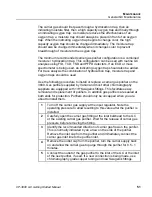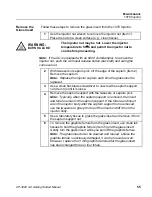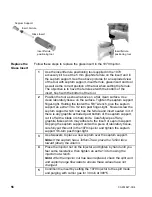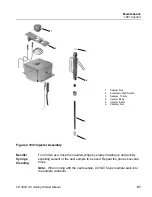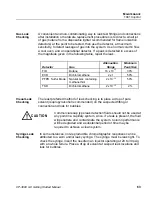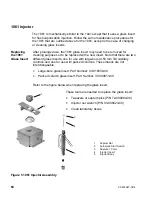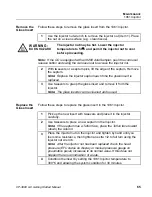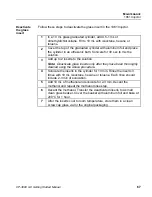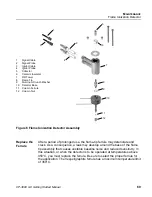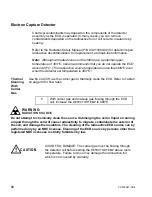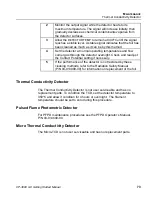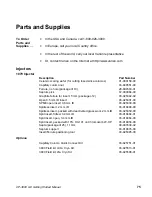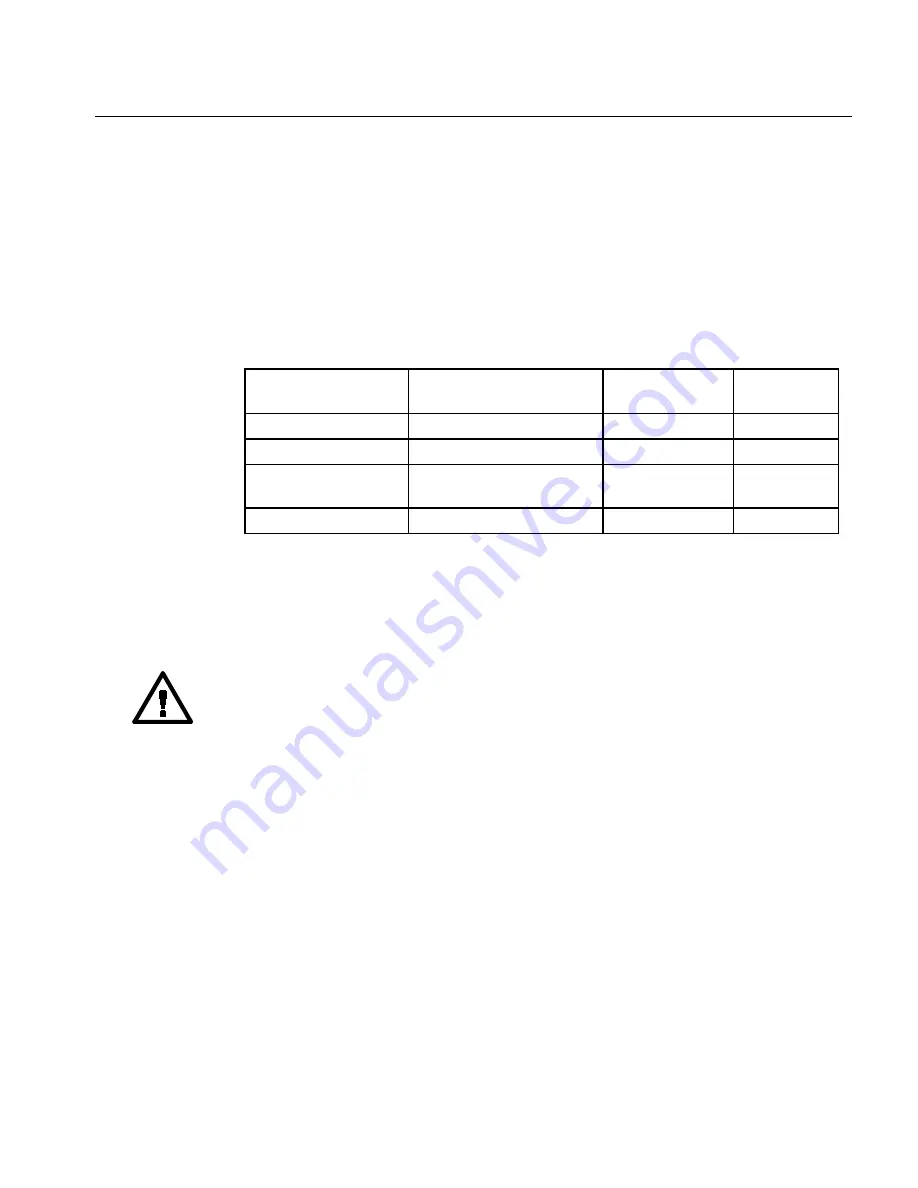
M
AINTENANCE
1041 Injector
CP-3800 GC Getting Started Manual
63
Gas Leak
Checking
A convenient and non-contaminating way to leak test fittings and connections
after installation or hardware replacement procedures is to direct a small jet
of gas (butane from a disposable lighter recommended for flame ionization
detectors) at the point to be tested, then use the detector, at maximum
sensitivity, to detect leakage of gas into the system. Use normal column flow,
a cool oven, and an operational detector. If a peak is detected in excess of
the magnitude given in the following table, repair the leak.
Detector
Gas
Attenuation,
Range
Maximum
Peak Size
FID
Butane
16 x 10
-12
30%
ECD
Dichloromethane
2 x 1
50%
PFPD, Sulfur Mode
Natural Gas containing
methanethiol
2 x 10
-10
50%
TSD
Dichloromethane
2 x 10
-12
2%
Visual Leak
Checking
The least preferred method of leak checking is to place a drop of pure
solvent (isopropyl alcohol recommended) on the suspected fitting or
connection and look for bubbles.
C A U T IO N
Commercial soap type leak detection fluids should not be used at
any point in a capillary system, since, if a leak is present, the fluid
will penetrate and contaminate the system. Column performance
will be degraded and a substantial period of time may be
required to achieve a clean system.
Syringe Leak
Checking
In some instances, non-reproducible chromatographic responses can be
attributed to a worn and/or leaky syringe. The syringe must be leak tight. To
check the syringe, insert the needle in an injector operating at 20 to 30 psig
with a no-hole ferrule. Place a drop of solvent at suspect leak locations and
look for bubbles.



